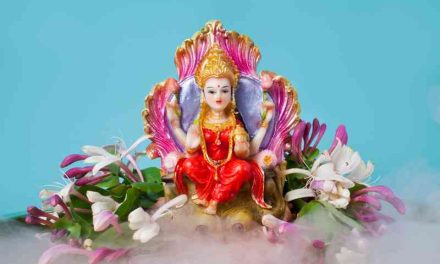The Maitrayani Upanishad is one of the ancient texts of Hinduism that is embedded in the Yajurveda, one of the four Vedas. It is also known as the Maitri Upanishad, and it belongs to the Maitrayanas school of thought. The Upanishad consists of seven sections, or Prapathakas, that deal with various aspects of metaphysics, ethics, and spirituality. The Upanishad is notable for its references to theories and practices that are also found in Buddhism, as well as in the schools of Yoga and Samkhya, two of the six orthodox systems of Hindu philosophy.
The Gunas
The concept of the Gunas, or the three qualities of nature, is central to both Yoga and Samkhya. The Gunas are Sattva (purity, harmony, wisdom), Rajas (activity, passion, desire), and Tamas (inertia, ignorance, delusion). According to both schools, the Gunas are present in varying degrees in everything in the universe, including the human mind and body. The goal of spiritual practice is to transcend the influence of the Gunas and attain liberation from the cycle of birth and death.
The Maitrayani Upanishad mentions the Gunas several times and describes their effects on human behavior and destiny. For example, in section 4.5, it says:
He who is predominantly Sattva goes upwards; he who is predominantly Rajas stays in the middle; he who is predominantly Tamas goes downwards.
In section 6.18, it says:
Sattva is knowledge; Rajas is doubt; Tamas is error. He who knows these three qualities as such becomes free from these qualities.
The Upanishad also suggests that the Gunas can be influenced by one’s actions, thoughts, and food. In section 6.34, it says:
By performing good deeds one becomes Sattvic; by performing bad deeds one becomes Rajasic; by performing neither good nor bad deeds one becomes Tamasic.
In section 6.19, it says:
By thinking of Sattva one becomes Sattvic; by thinking of Rajas one becomes Rajasic; by thinking of Tamas one becomes Tamasic.
In section 6.20, it says:
By eating Sattvic food one becomes Sattvic; by eating Rajasic food one becomes Rajasic; by eating Tamasic food one becomes Tamasic.
The Pranas
The concept of the Pranas, or the vital energies that sustain life, is also common to both Yoga and Samkhya. The Pranas are said to flow through subtle channels called Nadis in the body, and regulate various functions such as breathing, digestion, circulation, and perception. The Pranas are also related to the five elements: earth, water, fire, air, and ether. According to both schools, the Pranas can be controlled and balanced through various techniques such as breathing exercises (Pranayama), physical postures (Asana), and meditation.
The Maitrayani Upanishad discusses the Pranas in detail in section 6. It identifies five main Pranas: Prana (the upward-moving breath), Apana (the downward-moving breath), Vyana (the diffused breath), Udana (the ascending breath), and Samana (the equalizing breath). It also identifies five subsidiary Pranas: Naga (the belching breath), Kurma (the blinking breath), Krikara (the hunger breath), Devadatta (the yawning breath), and Dhananjaya (the pervading breath). It explains their functions and locations in the body, as well as their relation to the elements and the senses.
The Upanishad also describes how the Pranas can be used for spiritual purposes. For example, in section 6.22-23, it says:
He who knows Prana as Brahman obtains Brahman; he who knows Apana as Brahman obtains Brahman; he who knows Vyana as Brahman obtains Brahman; he who knows Udana as Brahman obtains Brahman; he who knows Samana as Brahman obtains Brahman.
He who meditates on Prana as light obtains light; he who meditates on Apana as bliss obtains bliss; he who meditates on Vyana as space obtains space; he who meditates on Udana as immortality obtains immortality; he who meditates on Samana as equality obtains equality.
The stages of meditation
The concept of the stages of meditation, or the progressive levels of concentration and awareness, is also shared by both Yoga and Samkhya. The stages are usually classified into four: Savitarka (with reasoning), Nirvitarka (without reasoning), Savichara (with reflection), and Nirvichara (without reflection). These stages correspond to the four states of consciousness: waking, dreaming, deep sleep, and transcendental. According to both schools, the ultimate goal of meditation is to reach the state of Samadhi, or the superconscious union with the Supreme Reality.
The Maitrayani Upanishad describes the stages of meditation in section 6. It uses different terms for them, but the meaning is similar. It calls them: Vitarka (deliberation), Vicara (investigation), Ananda (bliss), and Asmita (I-am-ness). It also relates them to the four states of consciousness: Jagrat (waking), Svapna (dreaming), Sushupti (deep sleep), and Turiya (transcendental). It says in section 6.20:
He who meditates on Vitarka as waking obtains waking; he who meditates on Vicara as dreaming obtains dreaming; he who meditates on Ananda as deep sleep obtains deep sleep; he who meditates on Asmita as transcendental obtains transcendental.
The Upanishad also explains how to practice meditation and what are the benefits of it. For example, in section 6.38, it says:
He who meditates on Brahman with one-pointed mind, having renounced all desires, attains the supreme bliss.
In conclusion, the Maitrayani Upanishad is a rich and profound text that has influenced the schools of Yoga and Samkhya in many ways. It presents a comprehensive view of the nature of reality, the role of the Gunas, the function of the Pranas, and the path of meditation. It also offers practical guidance and inspiration for seekers of truth and liberation.
Works Cited:
(1) Maitrayaniya Upanishad – Wikipedia. https://en.wikipedia.org/wiki/Maitrayaniya_Upanishad
(2) Maitrayaniya Upanishad – Wikipedia – BME. https://static.hlt.bme.hu/semantics/external/pages/Rta/en.wikipedia.org/wiki/Maitrayaniya_Upanishad.html
(3) Maitrayini Upanishad – Vyasa Mahabharata. https://www.vyasaonline.com/maitrayini-upanishad/





